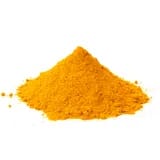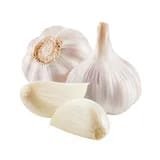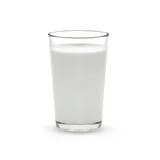Ingredients
Make sure you have...
Utensils
Stovetop, Frying pan, Pot (small), Colander
recipe

Step 1
Wash & slice the zucchini into half moons.


Step 2
Heat a drizzle of olive oil in pan, over high heat. Add the zucchini, curry & garlic. Sauté for 4-5 min, stirring occasionally. Season with herbes de Provence or thyme, if you have some.


Step 3
Reduce the heat & add the peas & coconut milk. Season with salt & pepper. Stir and simmer for 5-6 min.

Step 4
Meanwhile, in a pot of salted boiling water, cook the rice noodles according to package instructions. Once cooked through, drain the noodles.
Step 5
Add the drained noodles to the pan with the veggies & stir. Serve in a bowl & season to taste. Enjoy !

For a truly flavoursome dish, we suggest swapping out the coconut milk with soy cream & adding 'piment d'Espelette' & sauteed onions.
- Camille U, Nutritionist
Personal notes
Add your own flavor!
Nutrition facts
Average estimated amount for one serving
| Energy | 384 cal. |
| Fat | 10 g |
| Carbohydrates | 59 g |
| Protein | 11 g |
| Fiber | 6 g |
Values are based on an average estimate for one serving. All nutrition information presented on Jow is intended for informational purposes only. If you have any concerns or questions about your health, please consult with a health-care professional.
On average, one serving of the recipe "Zucchini & Pea Curry Noodles" contains 384 Energy, 10 g of Fat, 59 g of Carbohydrates, 11 g of Protein, 6 g of Fiber.
Price per portion
| € | Nos recettes à -2 € par portion |
| €€ | Nos recettes entre 2 € et 4 € par portion |
| €€€ | Nos recettes à +4 € par portion |
Please note, the price above is dependent on your grocer and the available products in the grocery store you chose.
Scores


A Nutri-score
The Nutri-score is an indicator intended for understanding nutritional information. Recipes or products are classified from A to E according to their food composition to promote (fiber, proteins, fruits, vegetables, legumes, etc.) and foods to limit (energy, saturated fatty acids, sugars, salt, etc.).
A+ Green-score
The Green-score is an indicator representing the environmental impact of food products. The recipes or products are classified from A+ to F. It takes into account several factors on the pollution of air, water, oceans, soil, as well as the impacts on the biosphere. These impacts are studied throughout the product life cycle.
Retrieving reviews...



